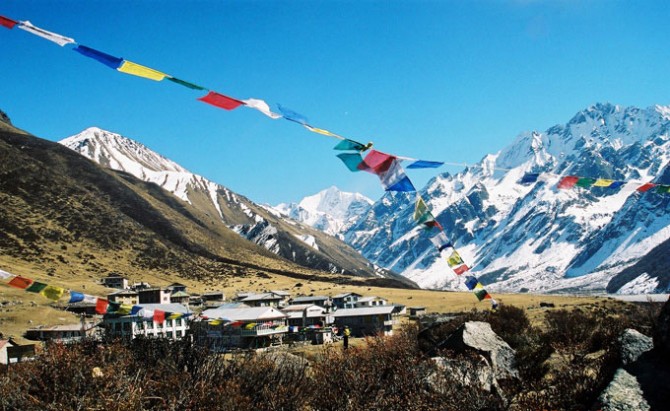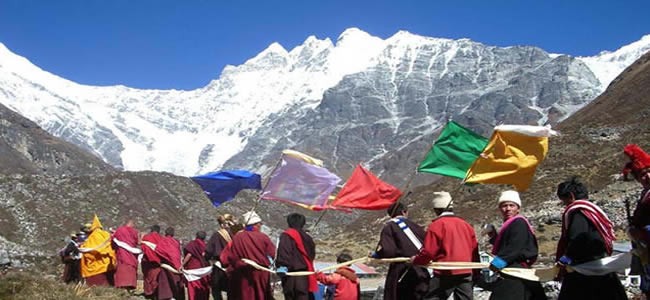This article aims to provide useful insights and assist you in exploring 5 Amazing Langtang Region Treks, hoping that they will be both helpful and inspiring for your future adventures. The Langtang region in Nepal, north of the Kathmandu Valley, is a scenic and lesser-explored area known for its natural beauty and captivating mountain landscapes. It is home to Langtang National Park, famous for its biodiversity and wildlife sightings. Trekking in Langtang allows for immersion in alpine scenery, dense forests, and encounters with traditional mountain villages. Majestic Himalayan peaks provide a stunning backdrop.
The region offers a variety of trekking options, from shorter Helambu Circuit treks to more challenging adventures like the Langtang Ganja La Pass trek. The region’s serene ambiance and unspoiled beauty make it an authentic and memorable Himalayan trekking experience. Treks often start in Syabrubesi, easily accessible from Kathmandu by bus. Here, we present 5 Amazing Langtang Region Treks to explore:
Embark on the Langtang Valley trek, a mesmerizing journey through the picturesque Langtang Valley. It offers breathtaking vistas of the majestic Langtang mountain ranges. The trek starts in Syabrubesi and follows the meandering path alongside the Langtang Khola River. The trek route winds through enchanting forests, charming villages, and serene alpine meadows. One of the highlights of this adventure is the exciting hike to Tserko/Tsergo Ri (5,033m), providing panoramic views of the surrounding landscapes. Immerse yourself in the beauty of the Langtang Valley, where every step unveils the awe-inspiring wonders of nature. Trekkers can also combine Langtang, Gosaikunda, and Helambu Trek for more adventure.

Experience the enchanting Tamang village of Langtang, a captivating highlight of the Tamang Heritage Trail Trek. Immerse yourself in the unique culture and traditions of the Tamang people as you traverse through this culturally rich region. Witness the mesmerizing exotic dances and rituals performed by the Tamang ethnicities, adding a touch of authenticity to your journey. Marvel at the snow-capped mountains that serve as a stunning backdrop throughout your trek, enhancing the natural beauty of the landscape. Make sure to visit the Tamang Museum, where you can delve deeper into their fascinating culture and traditions, enriching your understanding of this vibrant community. There is also an option of combining Langtang Valley and Tamang Heritage Trek.

Embark on the Helambu Trek, popular as one of the more accessible treks in the Langtang region. Traverse through charming villages, verdant forests, and picturesque alpine meadows, soaking in the tranquil beauty of the surroundings. Along the way, explore the ancient Tamang villages, each immersed in their own distinctive culture and traditions, offering a glimpse into their rich heritage. Throughout the trek, be captivated by the awe-inspiring vistas of the towering Langtang ranges, a majestic backdrop that adds an extra touch of magnificence to your journey.

Embark on the Gosaikunda Trek, a moderately challenging adventure in the Langtang region. This trek takes you through rugged terrain, but the rewards are worth it. The sacred Gosaikunda Lake is a mesmerizing sight, its beauty leaving you spellbound. Along the journey, encounter charming Tamang villages nestled amidst the magnificent Langtang ranges. In addition to Gosaikunda Lake, the hike to the surrounding lakes adds excitement to the trek. Crossing the highest pass, Lauribina (4,610m) is another thrilling highlight of this journey. Prepare for a memorable experience as you immerse yourself in the natural and spiritual wonders of the Gosaikunda Trek. You can also combine the Langtang Valley and Gosaikunda Treks for a remarkable adventure through the natural and spiritual wonders of the Langtang region.

Explore the breathtaking Langtang Ganja/Gunja La Pass Trek, nestled in Nepal’s Langtang National Park. This challenging high-altitude route presents trekkers with mesmerizing alpine landscapes, dense forests, and picturesque valleys. Standing at approximately 5,122 meters, the pass unveils panoramic views of majestic snow-capped peaks like Langtang Lirung and Shishapangma. The trek to Ganja La Pass demands physical endurance and some technical skills. But the excitement of conquering this tough challenge and immersing oneself in the untouched Himalayan beauty makes it an unforgettable adventure.

What is the best time to trek in the Langtang region?
Spring (Mar-May) and Autumn (Sep-Nov) are the best time to trek in the Langtang region. These months offer stable weather, clear skies, and favorable trekking conditions.
How long does it take to complete the Langtang region treks?
The Langtang region trek usually takes around 8-14 days to complete, depending on the itinerary and individual trekking pace. If you combine the trek, the trek duration extends. You can also customize the treks to suit your preferences and fitness level.
Is prior trekking experience necessary for Langtang region treks?
It is not compulsory for most Langtang region treks but it is a bonus to have a prior trekking experience. Most routes of the Langtang region treks are suitable for beginners. With proper preparation, physical fitness, and a positive mindset, Langtang region treks are achievable.
What permits are required for Langtang region treks?
Trekkers need to obtain the following two permits for the Langtang region treks:
Trekkers can obtain TIMS from Kathmandu and Langtang National Park at the entry point of the national park.
How difficult are the Langtang region treks?
The Langtang region trekking trails range from lower altitudes of around 1,400 meters to higher altitudes of 5,122 meters (in the case of the Ganja La Pass trek). The difficulty level varies depending on the specific trek chosen, but most routes fall in the moderate range with some challenging sections. The trails are off-beat but the natural beauty is mesmerizing. Get some physical exercises, training, and health check-ups before the trek. Consult a doctor and follow their instructions if necessary.
How are the accommodations available along the Langtang region trekking routes?
The accommodations available along the Langtang region trekking routes are simple and with basic facilities. Full-board meal during the trek is provided from the teahouses. Meals are basic but healthy and hygienic. Drinking water is easily available but use water purification kits for safety.
Do I need to hire a guide or porter for the Langtang region treks?
It is mandatory to hire a licensed guide for the Langtang region treks. Hiring a porter is a personal preference. Still, hiring a local licensed guide and porter is highly recommended for Langtang region treks. They can provide valuable assistance, share local knowledge, ensure safety, and help carry your backpack, allowing you to fully enjoy the trek.
Are there any altitude sickness risks in the Langtang region?
Yes, there are altitude sickness risks in the Langtang region. To minimize altitude sickness risks, practice proper acclimatization, gradual ascent, and maintain hydration and nutrition during the treks. Familiarize yourself with symptoms and take necessary precautions. Consult experienced trekking agencies or local authorities for accurate and up-to-date information before your trek.
Is Travel Insurance necessary for the Langtang region treks?
Yes, travel insurance is highly recommended for Langtang region treks to mitigate risks of altitude sickness, accidents, trip disruptions, and loss of belongings. Ensure your insurance policy covers trekking activities and the specific region you intend to visit. Carefully review the policy details before purchasing to ensure suitable coverage.